*This post may contain affiliate links. Read more »
Peerkangai Kootu is an easy-to-prepare nutritious curry made with tender ridge gourd, moong dal, coconut, and a fragrant blend of spices. This is going to absolutely upgrade your meal prep, because it’s nourishing as heck, and a lower-carb alternative to dal.
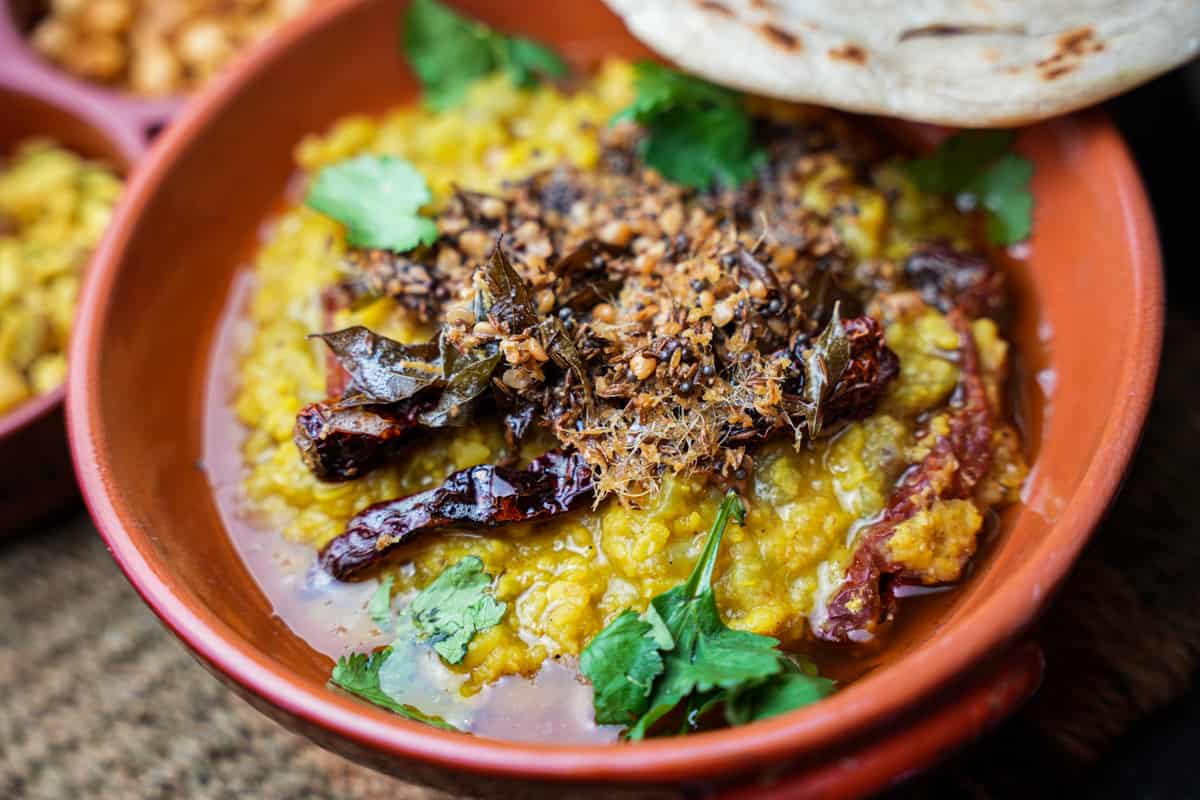

Enter your email & I'll send it to your inbox. Plus, get great new recipes from me every week!
By submitting this form, you consent to receive emails from Cinnamon Snail.
This sattvic South Indian dish is not only incredibly flavorful and satisfying but it's also packed with essential vitamins and minerals, making it the perfect choice for anyone looking to nourish their body and soul with a delicious and wholesome meal. This dish is also completely gluten-free, providing the asafoetida you use doesn’t contain wheat starch.
Peerkangai Kootu is a perfect accompaniment to your masoor dahl, veg. biryani, or toor dal tadka as it adds a burst of flavor and mooooore veggies! I am actually in full-on LOVE with ridge gourd, and this particular recipe has become a standard in my house any time I want to fill out a thali with more veggies
Grab your favorite pot, instant pot, or pressure cooker, and get ready to have the best ridge gourd party of your life!
Jump to:
- 🥰Why you are going to adore the ever-loving heck outta this recipe
- 🥒Everything you didn’t even know you wanted to know about Peerkangai!
- 🌶️ Notable ingredients in this recipe
- ➡️Learn sattvic vegan Indian recipes with me!
- 📖Step-by-step instructions
- 💡Serving Ideas
- 🥒Other gourd and peerkangai recipes:
- 🤷♀️Recipe FAQs
- ✌️Other Indian dishes that go great with this:
- Peerkangai Kootu: South Indian Ridge Gourd Curry
🥰Why you are going to adore the ever-loving heck outta this recipe
🌱Lean and Green: Indulge guilt-free in this recipe as the base curry is entirely fat-free, with just a hint of oil in the tadka, bringing you a low-fat delight. It also just happens to be one of my gluten-free vegan recipes!
🥗Calorie-Conscious Contener: For those mindful of their calorie intake, rejoice! Ridge gourd, the star of this dish, is a low-calorie vegetable, ensuring a light and wholesome meal.
🙅♀️🌾Ekadashi Ease: Looking for an Ekadashi-friendly option? Simply omit the dal in this recipe, and voila! You have a fantastic preparation aligning perfectly with Ekadashi requirements.
🕉️ Sattvic Serenity Embrace the purity of this dish—completely sattvic with no onions or garlic. Ideal for devotees and yogis seeking dishes suitable for bhoga offerings, bringing a sense of tranquility to your culinary experience.


🤘Learn to make flawless prasadam
This guide to my most popular sattvic vegan recipes is 100% FREE, & you'll love the actual heck out of it 🥰
🥒Everything you didn’t even know you wanted to know about Peerkangai!
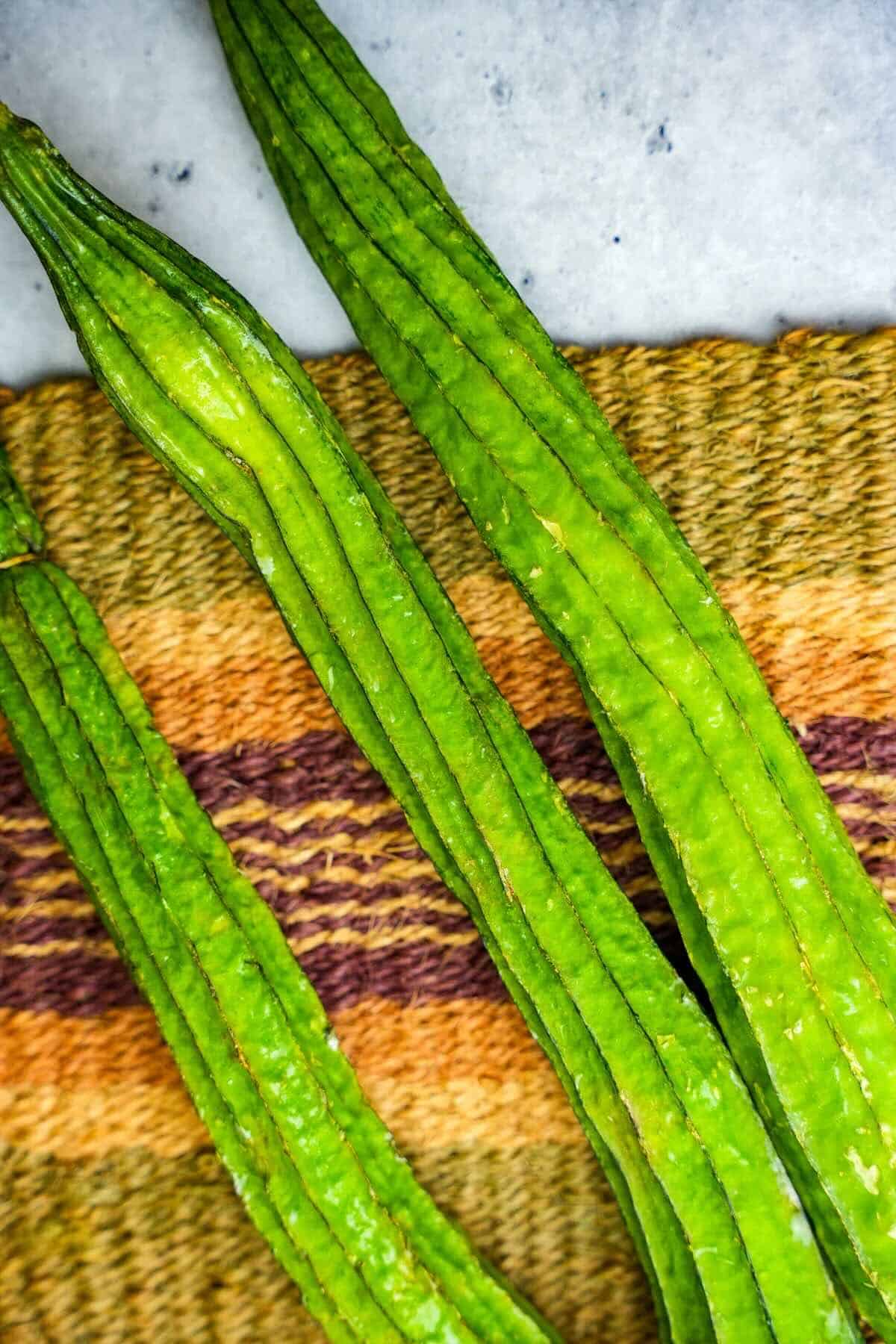
- Rich in vitamins and minerals: Ridge gourd is a great source of essential vitamins and minerals, including vitamin C, vitamin A, calcium, and iron.
- High in dietary fiber: Ridge gourd is rich in dietary fiber, which can help improve digestion, prevent constipation, and promote satiety.
- Low in calories: Ridge gourd is low in calories, especially when cooked by steaming or boiling, as it is in this recipe.
- Anti-inflammatory properties: Ridge gourd contains antioxidants and anti-inflammatory compounds that may help reduce inflammation in the body.
- Helps control blood sugar: Ridge gourd has been shown to have blood sugar-lowering properties, making it a great choice for people with diabetes or those at risk of developing the condition.
- Supports heart health: Ridge gourd is rich in potassium, a mineral that is important for heart health, as well as fiber, which may help lower cholesterol levels.
🌶️ Notable ingredients in this recipe
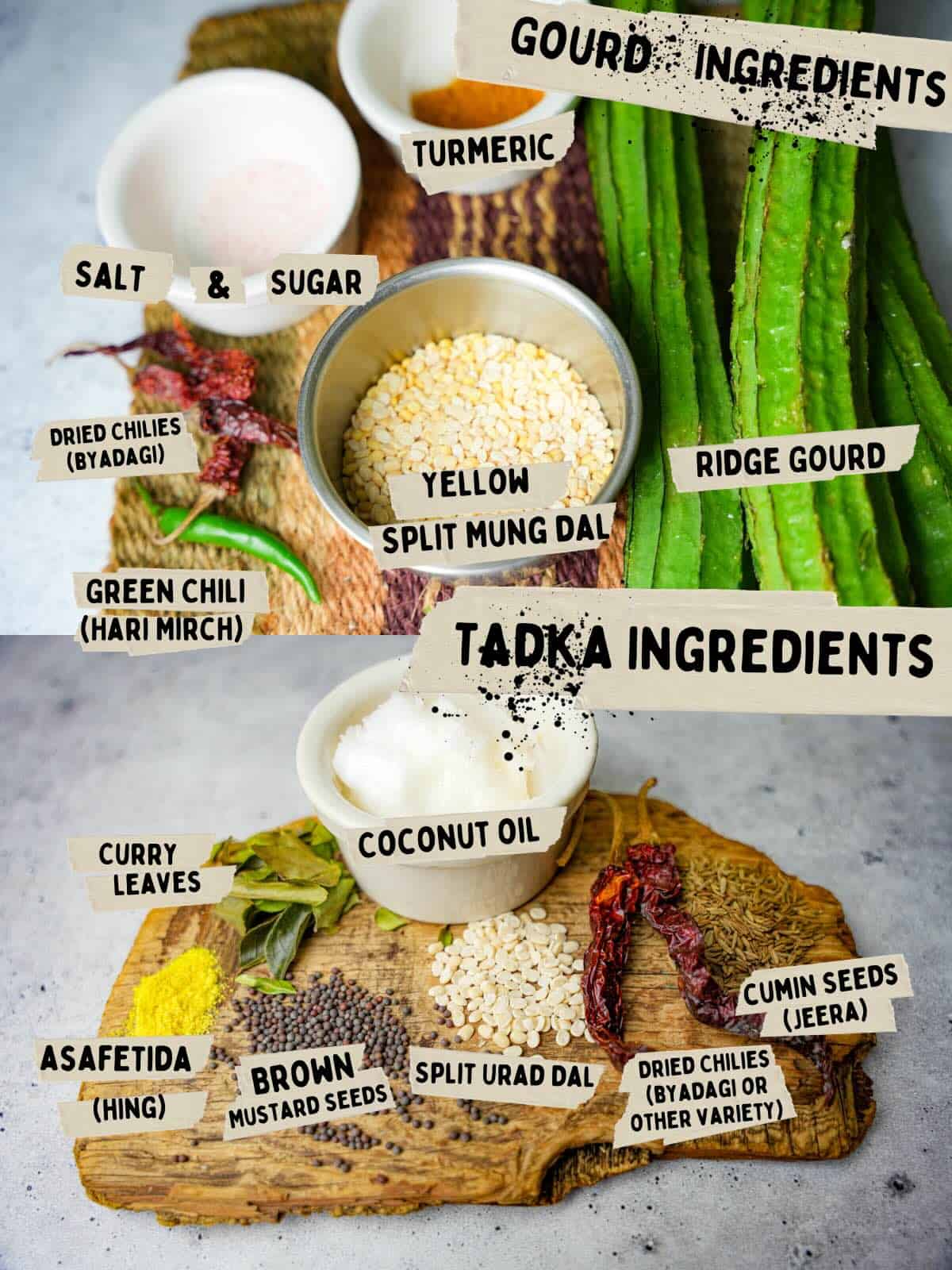
Byadagi chilies
Byadagi chilies are a variety of dried red chili peppers grown in the Indian state of Karnataka. They are known for their deep red color, mild to medium heat, and absolutely delightful fruity flavor with a hint of smokiness. You can substitute with arbol chilies or Kashmiri chilies.
Asafetida
Asafetida, also known as hing, is a pungent spice commonly used in Indian cuisine. It is made from the resin of the Ferula plant and has a strong, sulfurous aroma when raw, but when cooked it adds a savory, umami flavor to dishes. It is often used as a substitute for garlic and onion in sattvic and Jain cooking, but you can use it to upgrade the heck out of regular Indian recipes like aloo gobi and chana palak too.
I recommend using powdered asafoetida rather than the hard-to-measure block of resin form. Some brands of powdered asafoetida contain wheat starch to prevent it from clumping up. So if you are gluten-free, watch out for that!

Get my fave cumin seeds for free!
Using this link, add the wild mountain cumin to your cart, spend at least $15 on some of the other absurdly good spices from Burlap & Barrel (they all seriously slap) and the bottle of this bangin' wild mountain cumin becomes FREE, and you will love it so much.

Ridge gourd
Ridge gourd goes by a zillion freaking names across different languages and regions! In English, it's known as Chinese okra, angled luffa, or vegetable sponge. In Hindi, you might hear it referred to as Turai, Turiya, Jhinga, or Ghisoda. In Tamil, it goes by Peerkangai or Beerakaya, while in Telugu, you'll find it as Beerakaya. Kannada speakers call it Heerekai or Hirekai, and in Malayalam, it's known as Peermulanga or Peechinga. Bengali names include Jhingey and Jhinga, while in Gujarati, it's Tori or Turiya. Marathi speakers may use Dodka, Shira, or Shevga, and in Punjabi, it's referred to as Jhinga or Tori. In Urdu, you might hear it called Turiya.
See the recipe card at the bottom of this page for the complete list of ingredients and their quantities.
➡️Learn sattvic vegan Indian recipes with me!
Did you know I taught a really fun online class on my favorite sattvic Indian cuisine? The class includes a whole bunch of classic dishes that are delicious, nourishing, and cause no harm to animals!
📖Step-by-step instructions
You wanna see how this yummy thing gets made? I will walk you through the whole process. Or you can follow along with the easy-to-print recipe card towards the bottom of this page.
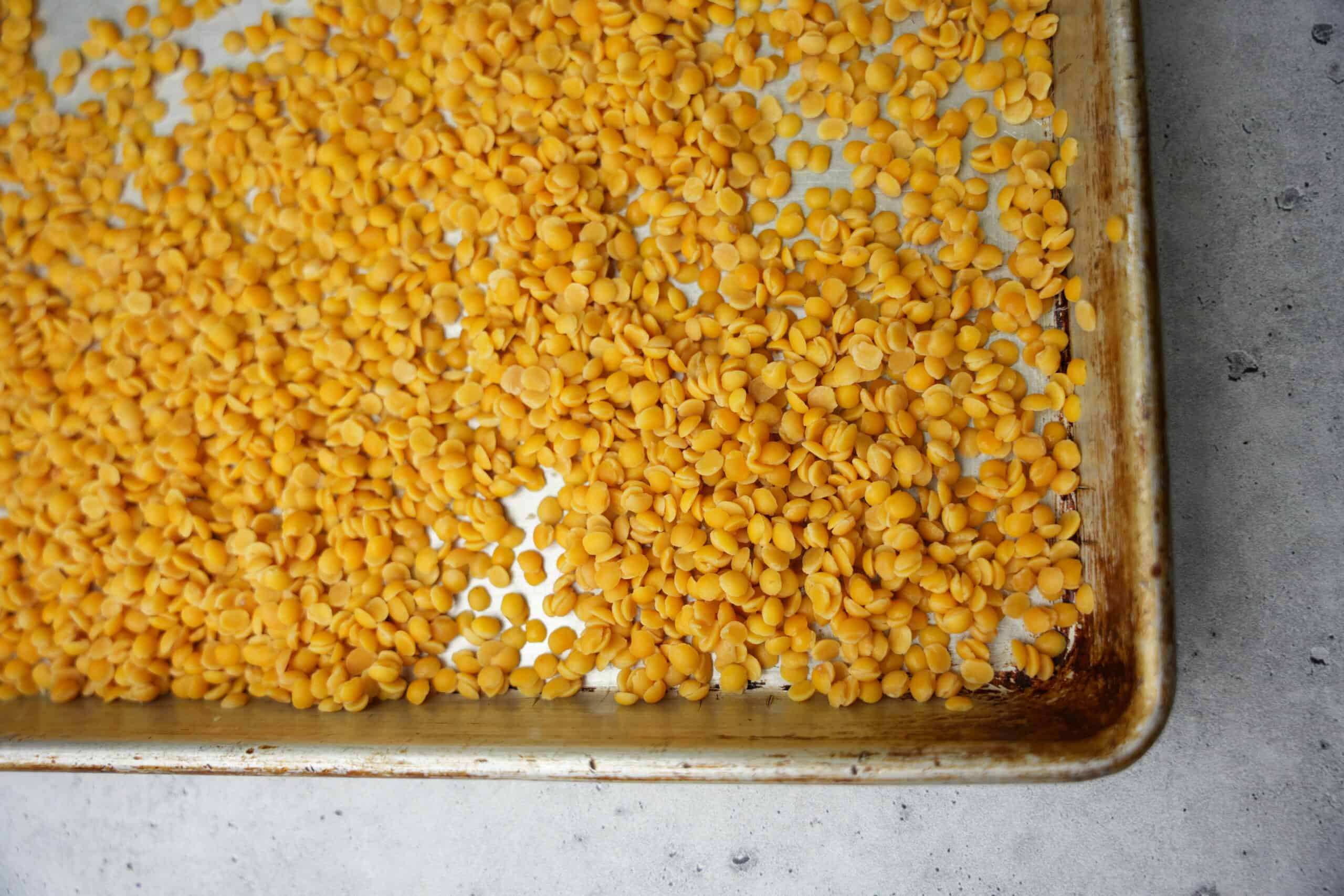
Step 1
Soak the dal in clean water for 20 minutes. Drain and rinse the soaked dal in a mesh strainer under cold running water. Spread the dal out on a baking pan to pick through it and make sure no pebbles or foreign matter are present.
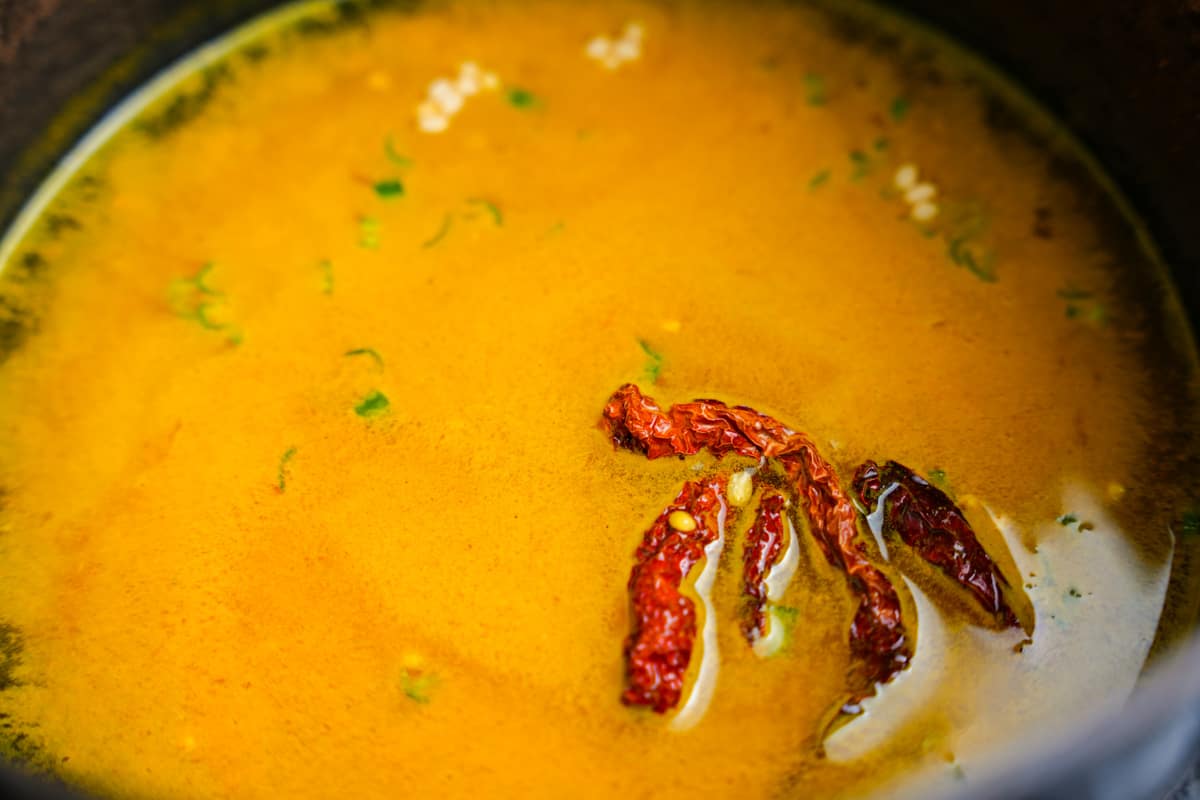
Step 2
Place the moong dal, water, turmeric, dried chilies, and fresh minced chili into a pot and bring the up to a boil over a high flame. Allow the dal to cook for 6 minutes to start to soften.
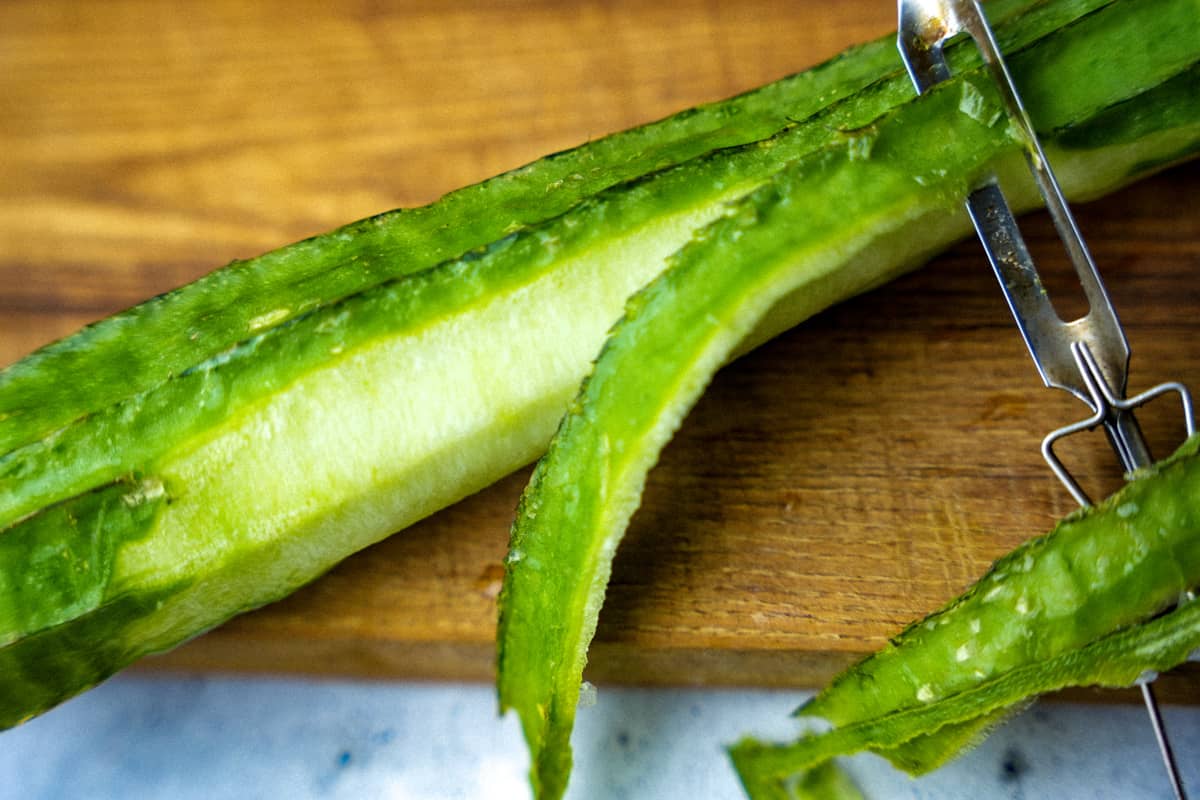
Step 3
Peel and cut the ridge gourd into 1 ½ centimeter pieces.
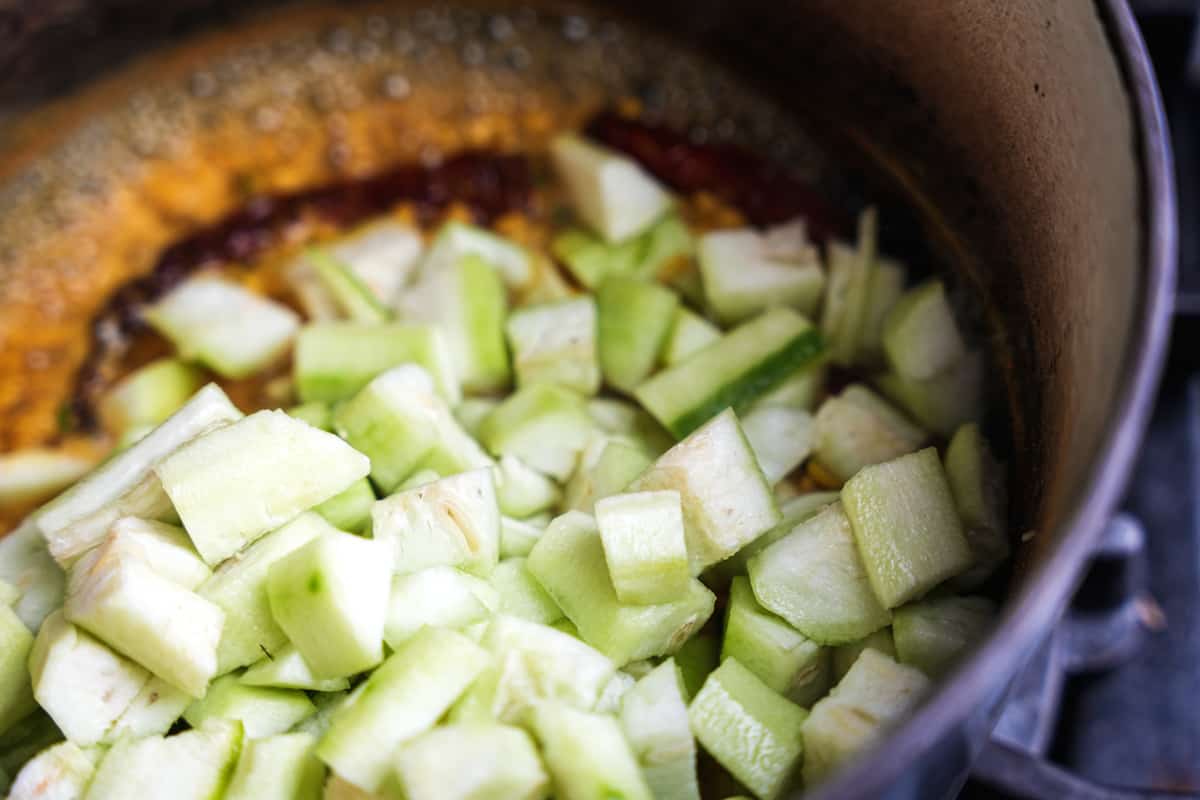
Step 4
Add the chopped ridge gourd, sugar, and salt. Cover the pot and lower the flame to a simmer. Cook the contents of the pot for 10-15 minutes until peekangai and dal are completely soft.
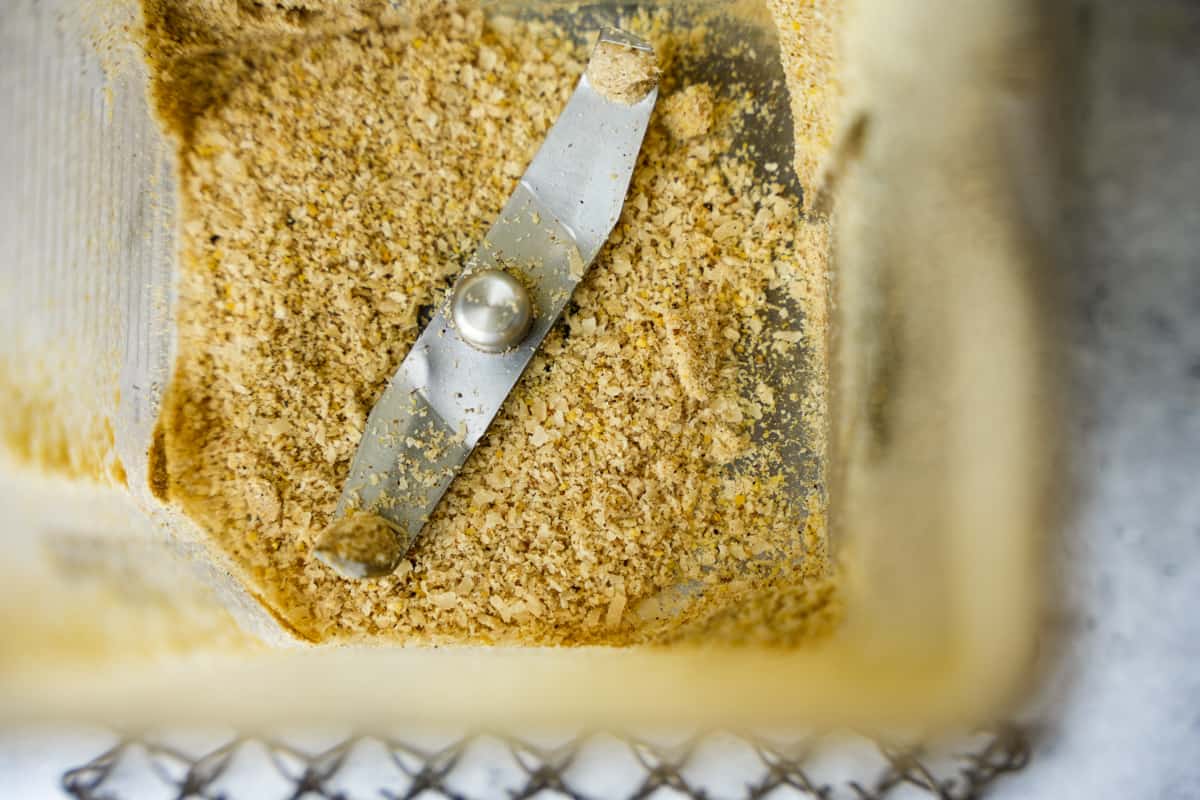
Step 5
While the dal and peerkangai are cooking, place the coconut, chana dal, cumin and peppercorns into a spice grinder or blender and grind into powder.
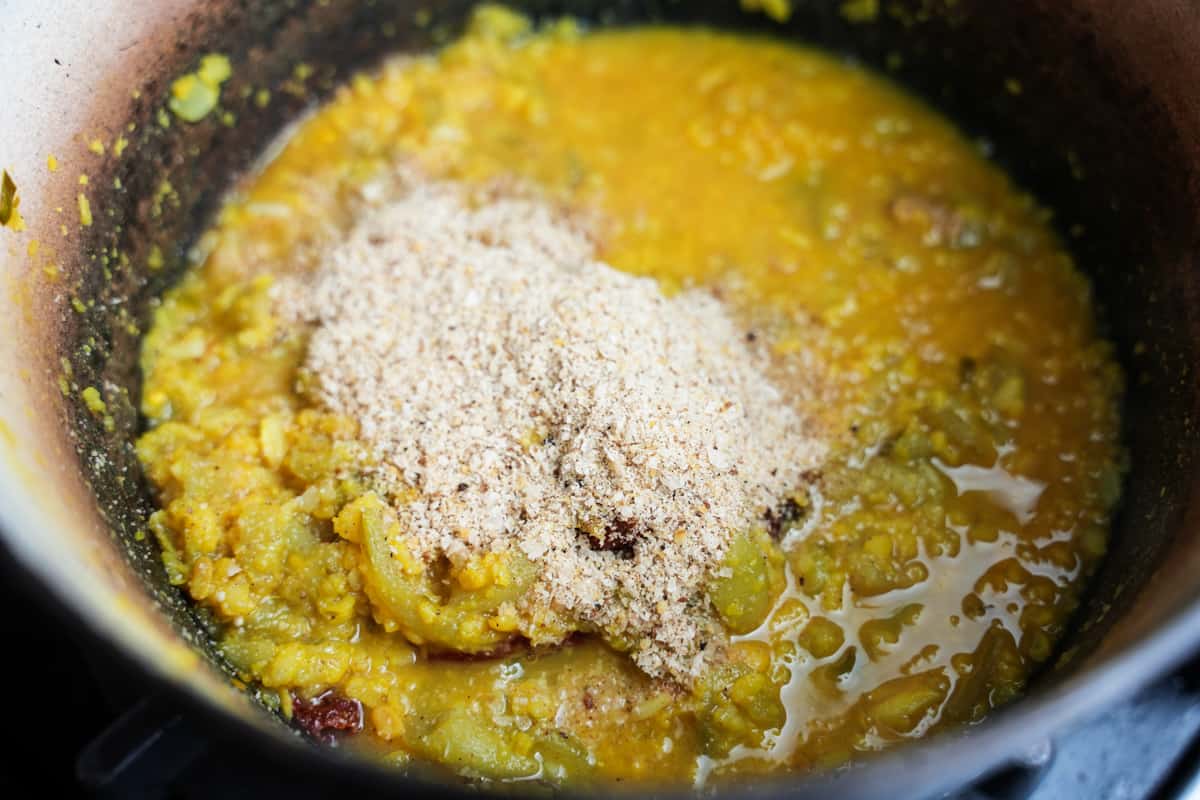
Step 6
When the contents of the pot are soft, stir in the ground spices.
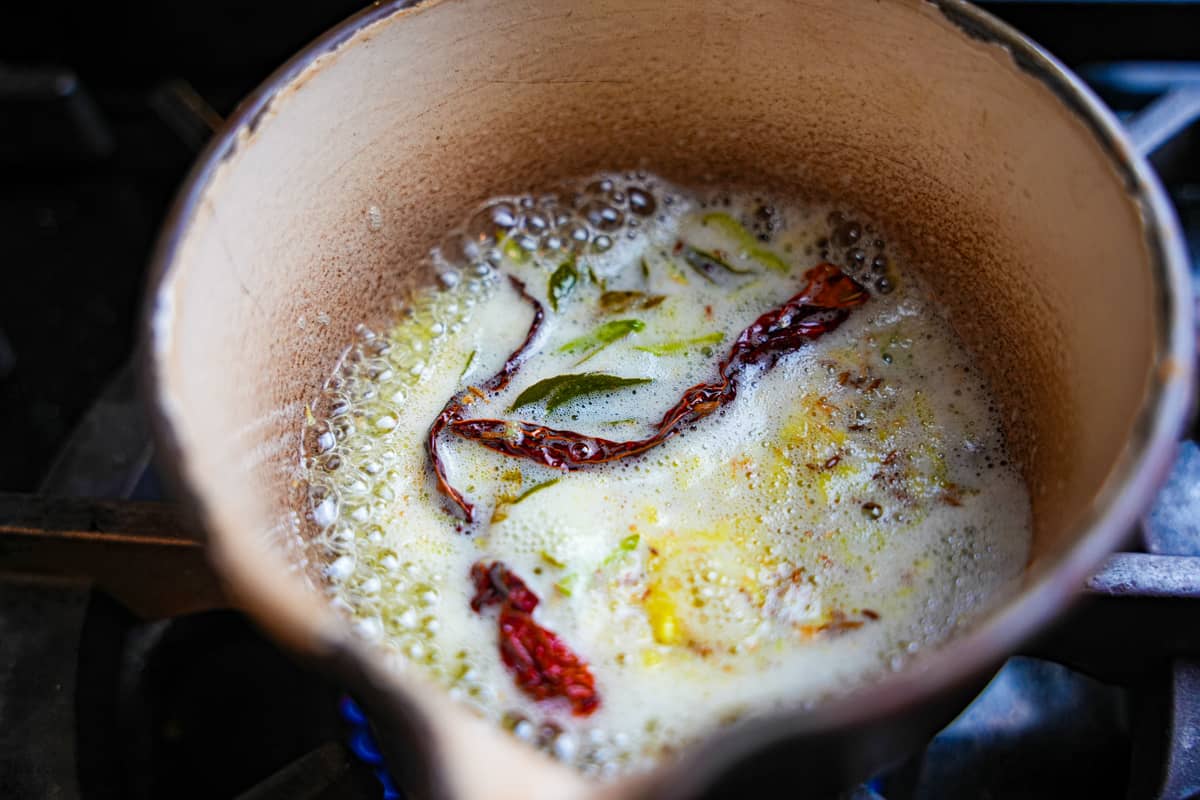
Step 7
Prepare the tadka in a separate pot. Heat coconut oil in a saucepan over medium heat. After 60 seconds when the oil is hot, stir in the mustard seeds, urad dal, cumin seeds, asafoetida, dried chilies, ginger, and curry leaves. Turn the flame down to low, and allow the spices and dal to slowly let their flavor out into the hot oil for ten minutes.
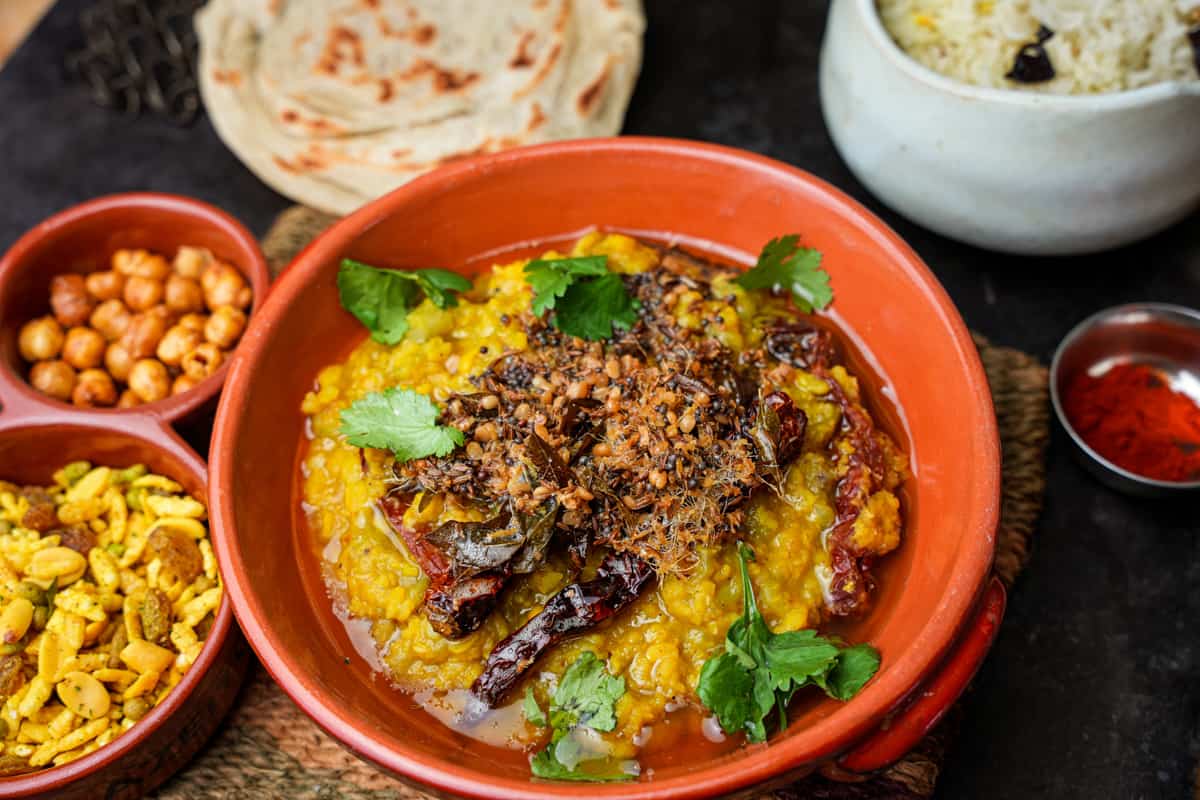
Step 8
To serve, place the kootu in an attractive serving bowl and spoon the tadka on top. Garnish with fresh cilantro leaves.
🔥Serve it with your favorite Indian pickles such as mango, amla, green chili, or carrot pickles.
💡Serving Ideas
This is a wonderful preparation to include in a thali platter! I often serve it alongside chana masala, Punjabi-style dry bhindi, rajma chawal, or other South Indian sabjis like aviyal, phool makhana sabji, or saag aloo. It's great over fragrant coconut rice or basmati pilau.
Bread anyone? Word up, you are gonna want to eat this with some classics like coriander-crusted, potato stuffed kulcha, msemen, or Kerala-style parotta.
Having some chaats to go alongside your ridgegourd curry might be just the ticket. Serve it with onion bhaji, medhu vadai, or shakarkandi ki chaat!
🥒Other gourd and peerkangai recipes:
👉In various states in South India, mashed ridge gourd is cooked with toor dal (do check out my toor dal recipe), curry leaves, tomatoes, tamarind, and other ingredients to make Peekangai Sambar.
👉Turai ki sabji is a light and flavorful peerkangai curry, cooked with aromatic spices like cumin and coriander.
👉Olan is a great gourd sabji made with black eyed peas and coconut milk
👉Lauki ki sabji is an addictive Indian bottle gourd curry.
👉Parval Sabji is made with little adorable pointed gourds.
👉One classic Bengali dish using ridge gourd is Jhinge Aloo Posto - where peeled ridge gourd, is cooked with potatoes, and a poppy seed paste.
👉Turai ki sabji is a totally different dish (without dal in it) that is mae with ridge gourd.
👉In Maharashtra, ridge gourd chutney (Dodkyachi chutney) is a popular dish that is often served with bhakri or chapati. The chutney is made by blending cooked ridge gourd with roasted peanuts, chilies, and spices.
🤷♀️Recipe FAQs
Peerkangai Kootu is a vegan dish unless it is prepared with ghee (clarified butter) in the tadka. It is also generally gluten-free, but if you have a strong gluten sensitivity, you should be careful to check whether the asafoetida it is made with contains wheat starch, which is often added to prevent clumping.
The word kootu means to bring together, and this dish is known for its combination of lentils and vegetables cooked in a spicy coconut-based gravy.
Kootu is a dish that originated in South India and is commonly found in Tamil cuisine. It is a thick and creamy vegetable stew that is typically made with a combination of vegetables, lentils, and coconut. The dish is usually seasoned with a mixture of spices and can be served as a side dish or a main course. Kootu is often served with rice or roti, and it is a popular dish in many South Indian households and restaurants.
🛕Making this dish for Ekadashi
Ekadashi is a Sanskrit word that literally means "the eleventh" (eka = one, dasha = ten). It refers to the eleventh day of each lunar fortnight in the Hindu calendar. There are two Ekadashis in each lunar month, which means there are 24 Ekadashis in a year. In some years, an extra month may be added to the lunar calendar, which means there could be an additional two Ekadashis, making the total number 26.
On Ekadashi, many Hindus, especially Vaisnavas, observe dietary and sensory fasting in order to devote more time and energy to spiritual practice. There are many different standards of Ekadashi Vrata (the vow of sense/self-control associated with Ekadashi). Some strict sadhakas go as far as observing Nirjala Ekadadhi (nir = without/away from jala = water) where one fasts for the day without even water. What is most common though, is fasting from grains and legumes. Some accepted grains for Ekadashi include buckwheat and sama (barnyard millet).
To make Peerkangai Kootu suitable for ekadashi:
👉Ensure your asafoetida powder does not contain wheat starch in it.
👉The recipe calls for coconut oil already which is suitable for ekadashi. Do not substitute soy oil, or vegetable oil (which is often just a different name for oil from soy).
👉Replace the moong dal in this recipe with an equal amount of buckwheat groats, or simply an additional ⅔ cup of chopped peeled ridge gourd.
👉Use ground cashews in place of chana dal in the ground mixture.
👉Leave the urad dal out of the tadka, or replace it with a tablespoon of ground cashew.
What is most important for observing Ekadashi Vrata is not the level of renunciation, but using that time and focus away from sense enjoyment, to dedicate the time to spiritual matters!
Peerkagai Kootu is a great option for meal prep for school or work because it stays fresh for up to 4 days if stored and reheated properly! here’s everything you ever wanted to know about that:
Over the course of thirty minutes, let the kootu cool to room temperature before storing it.
Transfer the kootu to an airtight container and seal it tightly.
Ideally, store the tadka in a separate container, so that you can spoon it on top of the curry when it is reheated.
Store the kootu in the refrigerator for up to four days.
🔥Reheating on the stovetop:
Remove the kootu from the refrigerator and let it sit at room temperature for 10-15 minutes.
Transfer the kootu to a saucepan and add a splash of water or vegetable stock to thin it out.
Heat the kootu over medium heat, stirring occasionally, until it is heated through.
☢️Reheating in a microwave:
Remove the kootu from the refrigerator and let it sit at room temperature for 10-15 minutes.
Transfer the kootu to a microwave-safe dish and cover it with a lid or microwave-safe plastic wrap.
Microwave the kootu on high for 1-2 minutes or until heated through, stirring once in between.
Remove the kootu from the microwave and sprinkle the stored tadka on top of it.
Microwave the kootu for another 30 seconds or until the tadka is heated through.
Don't forget to have a little candied amla as a sweet digestive aid afterwards!
The meatiest vegan Indian recipes I share on this site are vegan tikka masala, vegan butter chicken, kathal ki sabji, and soya chaap sabji. They all give animal flesh a run for it's money without harming a creature!
✌️Other Indian dishes that go great with this:
Say Hi on Social! 👋
Follow me on Instagram & Facebook for more recipes.
❤️Love this recipe? It helps me out greatly if you leave a 5-star 🌟🌟🌟🌟🌟rating in the recipe card below and maybe even leave me a lovey-dovey comment too!
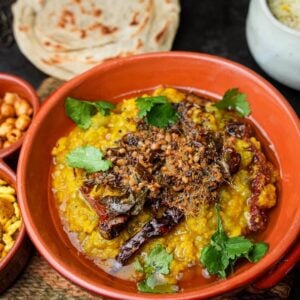
Peerkangai Kootu: South Indian Ridge Gourd Curry
Equipment
Ingredients
- Peerkangai
- ¼ cup yellow split moong dal
- 1 ⅓ cups water
- ½ teaspoon turmeric powder
- 3 dried chilies Byadgi or Arbol
- 1 small green chili minced
- 3.5 cups ridge gourd peeled and chopped
- 1 teaspoon sugar jaggery, coconut sugar, or evaporated cane juice
- 1 teaspoon salt
To grind:
- ⅓ cup dried shredded coconut either natural or refined are both fine
- 1 tablespoon roasted chana dal
- 1 teaspoon toasted cumin seeds
- ½ teaspoon black peppercorns
Tadka (seasoned oil topping):
- 3 tablespoons refined coconut oil
- ½ teaspoon mustard seeds
- ½ teaspoon split urad dal optional
- 1 teaspoon cumin seeds
- ¼ teaspoon asafetida
- 2 dried chilies Byadgi or Arbol
- 2 teaspoons grated fresh ginger
- 10 curry leaves
- Fresh cilantro leaves to garnish
Instructions
- Soak the moong dal in clean water for 20 minutes.
- After soaking, drain and rinse the dal in a mesh strainer under cold running water to remove any impurities.
- Spread the dal on a baking pan and carefully check for any pebbles or foreign matter.
- Put the moong dal, water, turmeric, dried chilies, and fresh minced chili in a pot and bring it to a boil over high heat. Once boiling, continue to cook for 6 minutes to start softening the dal.
- Add chopped ridge gourd, sugar, and salt to the pot. Cover the pot and lower the flame to a simmer. Add additional water if it is running low. Cook for 10-15 minutes until the peekangai and dal are soft.
- While the dal is cooking, use a spice grinder or blender to grind coconut, chana dal, cumin, and peppercorns into powder.
- Once the contents of the pot are soft, stir in the ground spices.
- Prepare the tadka in a separate pot. Heat coconut oil in a saucepan over medium heat. After 60 seconds, add mustard seeds, urad dal, cumin seeds, asafoetida, dried chilies, ginger, and curry leaves. Lower the flame to low, and allow the spices and dal to slowly release their flavors into the hot oil for ten minutes.
- To serve, transfer the kootu to an attractive serving bowl and spoon the tadka on top. Garnish with fresh cilantro leaves.
Notes
👉Instructions for making Peerkangai Kootu in an instant pot:
-
- Soak the moong dal in clean water for 20 minutes as directed.
-
- Drain and rinse the soaked dal under cold running water.
-
- Place the dal in the Instant Pot along with the chopped ridge gourd, turmeric, dried chilies, sugar, salt, and water.
-
- Close the lid, set the valve to sealing, and cook on high pressure for 8 minutes.
-
- While the dal and peerkangai are cooking, grind coconut, chana dal, cumin, and peppercorns in a spice grinder or blender to prepare the spice powder.
-
- When the cooking cycle is complete, allow the pressure to release naturally for 5 minutes, then release any remaining pressure manually.
-
- Open the lid and stir in the ground spices.
-
- Heat coconut oil in a separate saucepan over medium heat.
-
- Add the mustard seeds, urad dal, cumin seeds, asafoetida, dried chilies, ginger, and curry leaves to prepare the tadka, and sauté for a few minutes until fragrant.
-
- Place the Peerkangai Kootu in an attractive serving dish, spoon the tadka on top, and garnish with fresh cilantro leaves.
👉Instructions for making Peerkangai Kootu in a pressure cooker:
-
- Soak the moong dal in clean water for 20 minutes. Drain and rinse the soaked dal under cold running water.
-
- In a pressure cooker, add the moong dal, chopped ridge gourd, turmeric, dried chilies, sugar, salt, and water.
-
- Close the pressure cooker lid and cook on high heat until the first whistle.
-
- Reduce the heat and let it cook for another 6-8 minutes or until the dal and ridge gourd are completely soft.
-
- Meanwhile, prepare the spice powder by grinding coconut, chana dal, cumin, and peppercorns in a spice grinder or blender.
-
- When the dal and ridge gourd are cooked, stir in the ground spices.
-
- In a separate pan, prepare the tadka by heating coconut oil, adding mustard seeds, urad dal, cumin seeds, asafoetida, dried chilies, ginger, and curry leaves, and sautéing for a few minutes until fragrant.
-
- Place the Peerkangai Kootu in an attractive serving dish, spoon the tadka on top, and garnish with fresh cilantro leaves.

Enter your email & I'll send it to your inbox. Plus, get great new recipes from me every week!
By submitting this form, you consent to receive emails from Cinnamon Snail.

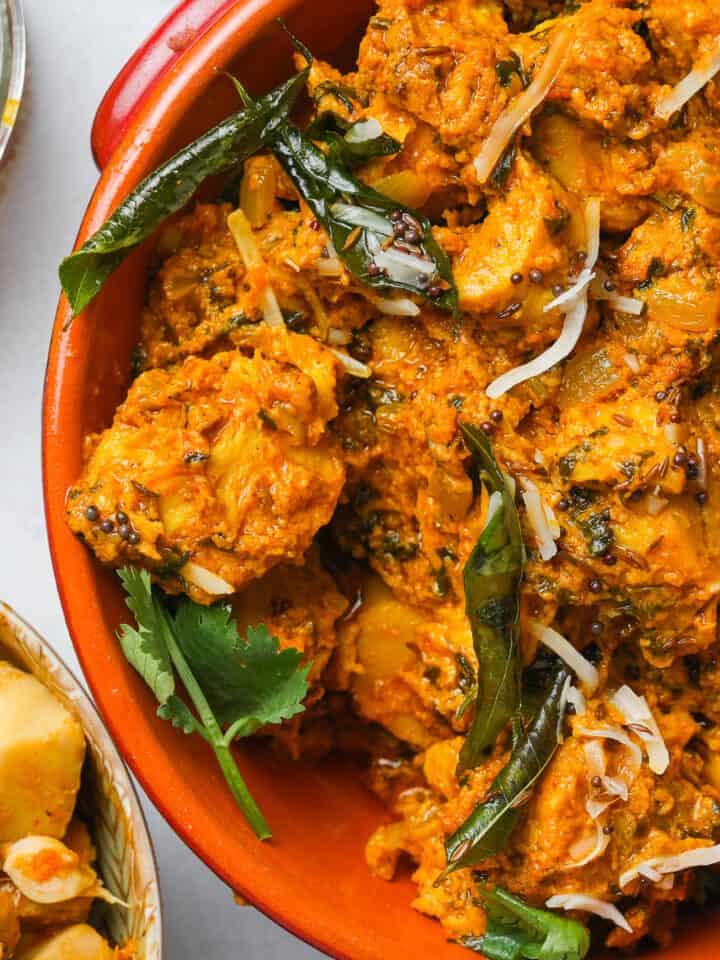
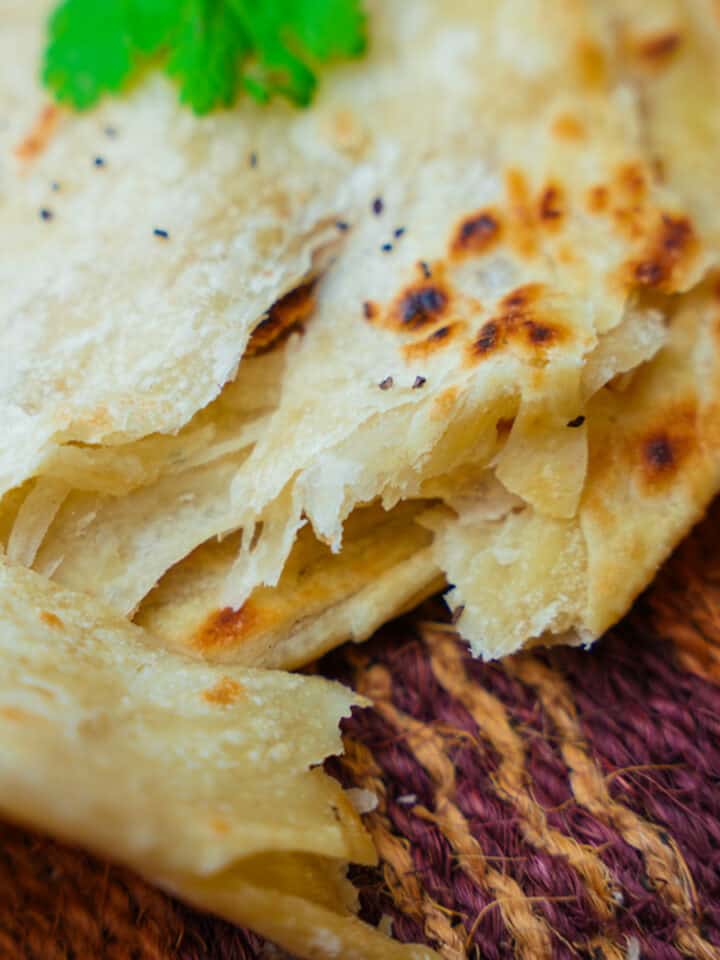
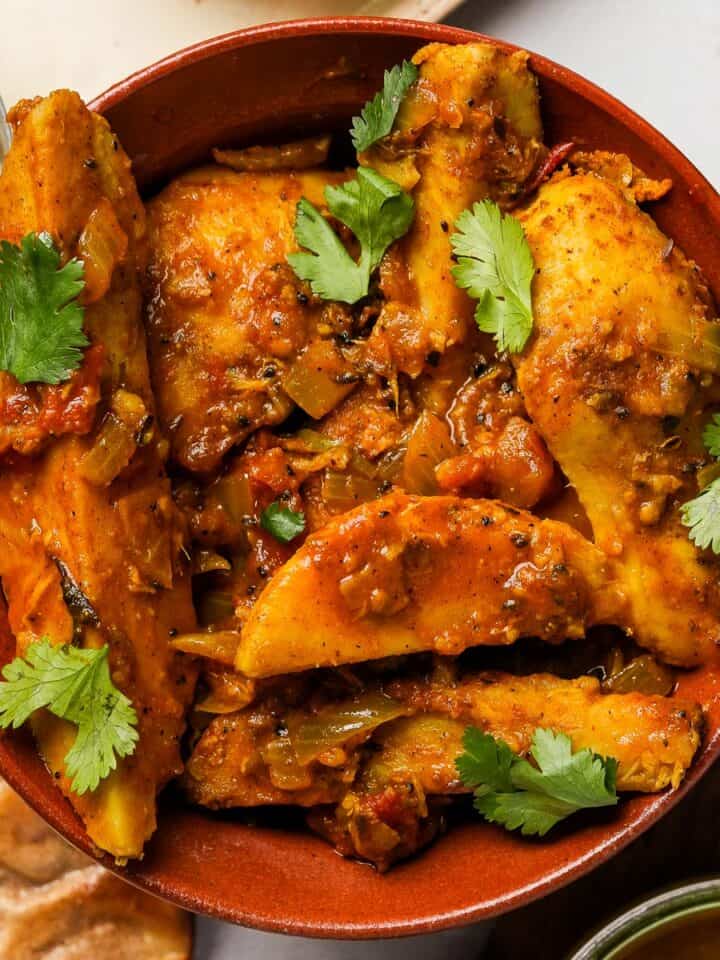
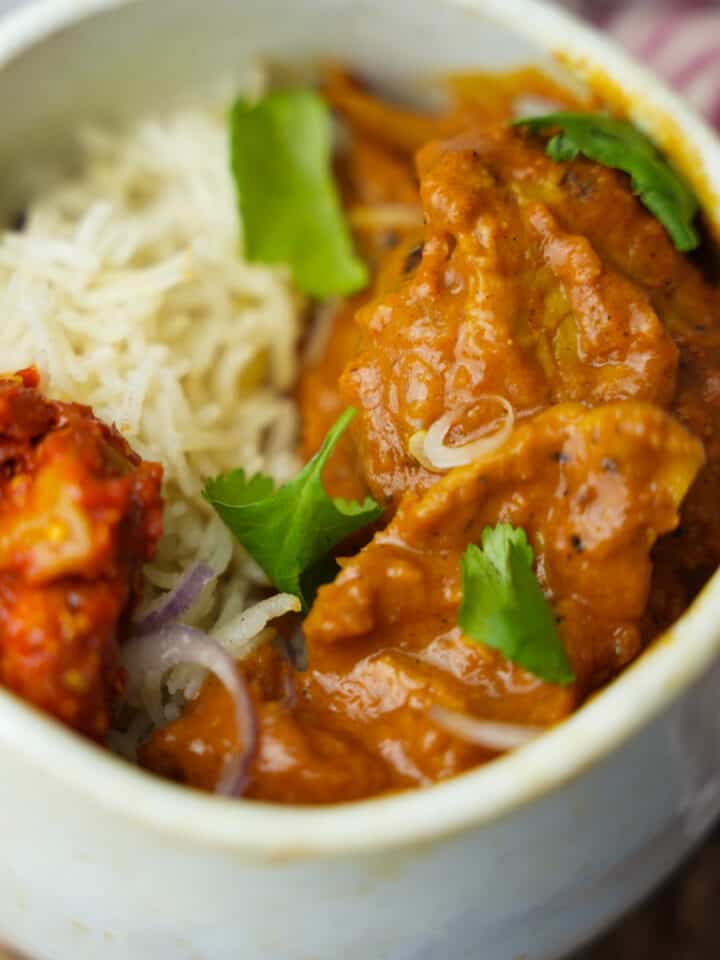




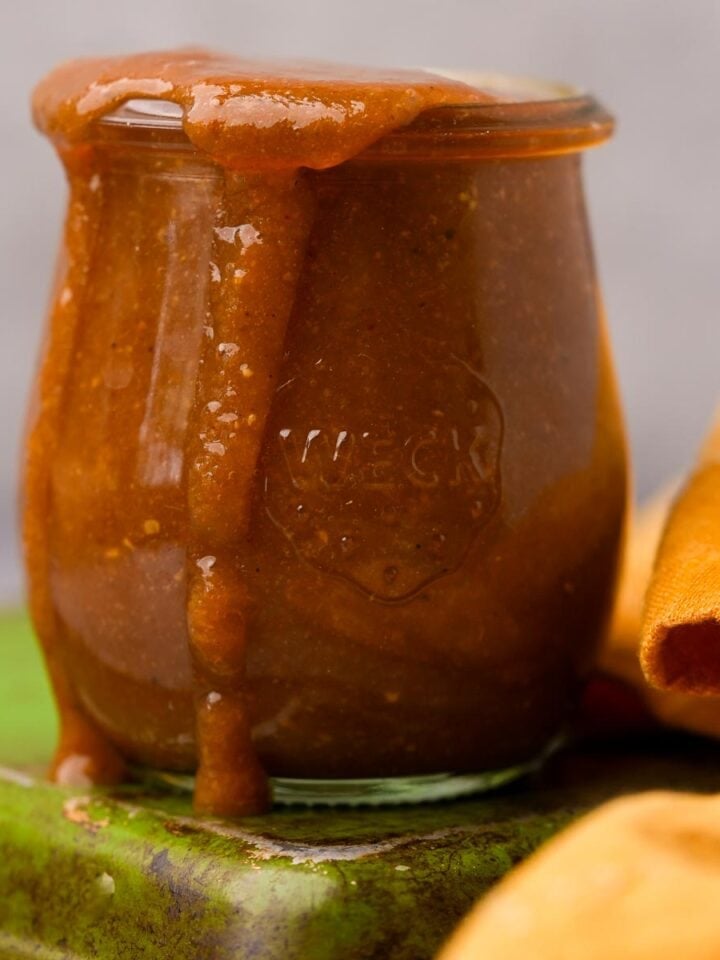
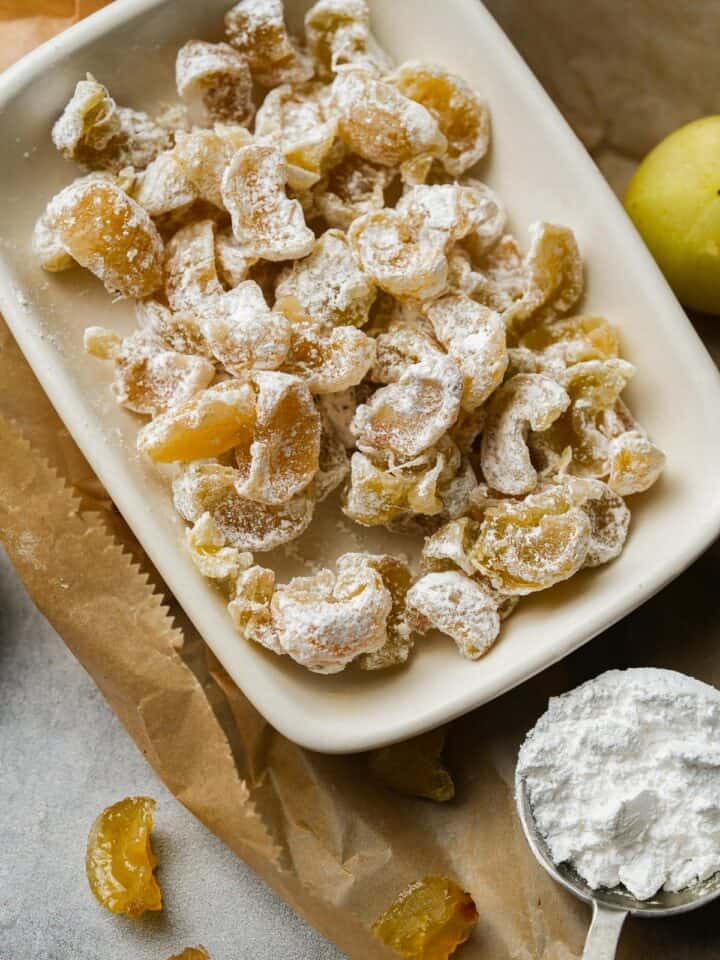
Leagle says
this came out really well, reheated well. the sweetness was playing hypercarry alongside some andhra style guvar but ofc also with ol' adam sobel's (1) ekadasi aloo parwal ki sabji and amla & lime pickle from the (2) achar masala recipe <3
PATRICIA HIGAZI says
This is so yummy and so authentically Indian For such an explosion of fresh taste this is easy to make.
Carol says
Sooo good. Even better the next day. Followed the recipe exactly. Any excuse to add to my pantry and try new stuff. Had to Google "roasted chana dal" and peel the cool ridge gourd with a paring knife. NP. Great recipe. Served with lots of XL Basmati